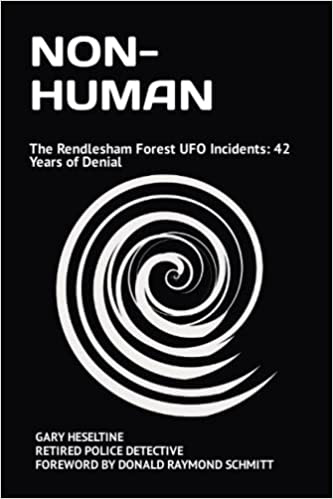Scientists Uncover Unexpected Radioactive Spike in Seafloor
Science/Medical/Technology
Tuesday 18th, February 2025
3 minute read.
Scientists in Germany have uncovered an unusual radioactive anomaly deep beneath the Pacific Ocean, dating back between 9 and 12 million years. The discovery, which involves a sudden surge in the isotope beryllium-10, has raised intriguing questions about Earth's ancient history and its exposure to cosmic events.
The research, led by physicist Dominik Koll of the Helmholtz-Zentrum Dresden-Rossendorf research institute, involved analysing thin layers of the seafloor crust. The anomaly was detected in seabed samples from the Central and Northern Pacific, but Koll and his colleagues suggest that this phenomenon could extend across the entire Pacific, or possibly the world.
Beryllium-10 is a radioactive isotope formed when cosmic rays interact with Earth's atmosphere. Over time, it falls to the ocean surface and becomes incorporated into the slow-forming ferromanganese crusts on the seafloor. These crusts, found in oceans worldwide, provide a detailed geological record, with just a few millimetres preserving over a million years of ocean chemistry.
Scientists are uncertain about the source of the beryllium-10 surge, but they propose several theories. One possibility is a "grand reorganisation" of ocean currents more than 9 million years ago, leading to increased beryllium-10 deposits in the Pacific. However, the researchers also suggest that this could be a global event. The spike might be linked to a near-Earth supernova or the Solar System’s passage through a cold interstellar cloud, both of which could have increased cosmic ray activity.
Due to its half-life of about 1.4 million years, beryllium-10 is a crucial tool for dating geological formations, particularly within the past 10 million years. While carbon dating is only effective for up to 50,000 years, and uranium isotope dating is unsuitable for this purpose, beryllium-10 offers a unique alternative.
Ferromanganese crusts, which typically range from 1 to 26 centimetres in thickness, provide near-continuous records of Earth's history spanning approximately 75 million years. By measuring the decay of beryllium-10 into boron, scientists can determine the age of these deposits with remarkable accuracy.
The researchers found an unexpected surge in beryllium-10 levels. "At around 10 million years, we found almost twice as much 10Be as we had anticipated," Koll explained. "We had stumbled upon a previously undiscovered anomaly."
This anomaly, the team suggests, could serve as an independent time marker for marine archives, much like a bookmark in a historical record. They verified their findings across multiple sites in the Pacific. One 50-millimetre sample, for instance, dated back more than 18 million years.
Based on their analysis, the team calculated that the ferromanganese crusts in the Pacific grew at a rate of 1.52 millimetres per million years. This places the beryllium-10 anomaly between 10.5 and 11.8 million years ago. Wherever this anomaly appears in similar samples, it likely corresponds to the same period in Earth's history.
The source of this anomaly remains unknown, but the researchers suggest that it is unlikely to have originated from solar activity alone. Instead, they propose that Earth’s protection against cosmic rays may have changed roughly 10 million years ago. Another possibility is that a nearby supernova bombarded the planet with an unusually high level of radiation.
"Only new measurements can indicate whether the beryllium anomaly was caused by changes in ocean currents or has astrophysical reasons," said Koll. "That is why we plan to analyse more samples in the future and hope that other research groups will do the same."
Further studies will determine whether the beryllium blip is a local anomaly or a global event. If the latter proves true, it could reshape our understanding of Earth’s cosmic history.
The study was published in Nature Communications.
The research, led by physicist Dominik Koll of the Helmholtz-Zentrum Dresden-Rossendorf research institute, involved analysing thin layers of the seafloor crust. The anomaly was detected in seabed samples from the Central and Northern Pacific, but Koll and his colleagues suggest that this phenomenon could extend across the entire Pacific, or possibly the world.
Beryllium-10 is a radioactive isotope formed when cosmic rays interact with Earth's atmosphere. Over time, it falls to the ocean surface and becomes incorporated into the slow-forming ferromanganese crusts on the seafloor. These crusts, found in oceans worldwide, provide a detailed geological record, with just a few millimetres preserving over a million years of ocean chemistry.
Scientists are uncertain about the source of the beryllium-10 surge, but they propose several theories. One possibility is a "grand reorganisation" of ocean currents more than 9 million years ago, leading to increased beryllium-10 deposits in the Pacific. However, the researchers also suggest that this could be a global event. The spike might be linked to a near-Earth supernova or the Solar System’s passage through a cold interstellar cloud, both of which could have increased cosmic ray activity.
Due to its half-life of about 1.4 million years, beryllium-10 is a crucial tool for dating geological formations, particularly within the past 10 million years. While carbon dating is only effective for up to 50,000 years, and uranium isotope dating is unsuitable for this purpose, beryllium-10 offers a unique alternative.
Ferromanganese crusts, which typically range from 1 to 26 centimetres in thickness, provide near-continuous records of Earth's history spanning approximately 75 million years. By measuring the decay of beryllium-10 into boron, scientists can determine the age of these deposits with remarkable accuracy.
The researchers found an unexpected surge in beryllium-10 levels. "At around 10 million years, we found almost twice as much 10Be as we had anticipated," Koll explained. "We had stumbled upon a previously undiscovered anomaly."
This anomaly, the team suggests, could serve as an independent time marker for marine archives, much like a bookmark in a historical record. They verified their findings across multiple sites in the Pacific. One 50-millimetre sample, for instance, dated back more than 18 million years.
Based on their analysis, the team calculated that the ferromanganese crusts in the Pacific grew at a rate of 1.52 millimetres per million years. This places the beryllium-10 anomaly between 10.5 and 11.8 million years ago. Wherever this anomaly appears in similar samples, it likely corresponds to the same period in Earth's history.
The source of this anomaly remains unknown, but the researchers suggest that it is unlikely to have originated from solar activity alone. Instead, they propose that Earth’s protection against cosmic rays may have changed roughly 10 million years ago. Another possibility is that a nearby supernova bombarded the planet with an unusually high level of radiation.
"Only new measurements can indicate whether the beryllium anomaly was caused by changes in ocean currents or has astrophysical reasons," said Koll. "That is why we plan to analyse more samples in the future and hope that other research groups will do the same."
Further studies will determine whether the beryllium blip is a local anomaly or a global event. If the latter proves true, it could reshape our understanding of Earth’s cosmic history.
The study was published in Nature Communications.



